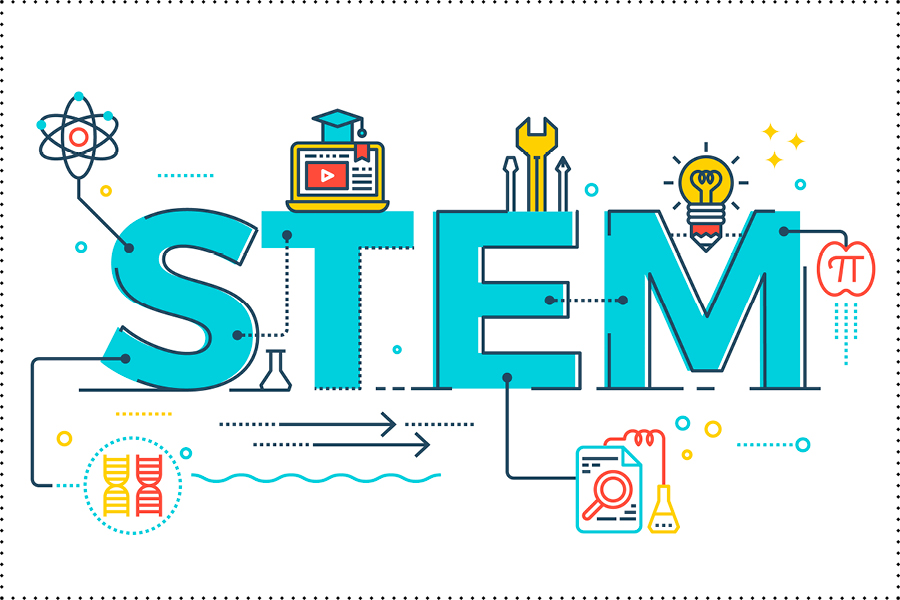In the dynamic landscape of the 21st century, the demand for individuals with skills in science, technology, engineering, and mathematics (STEM) has never been higher. This blog post delves into the importance of STEM education, exploring its impact on students, the workforce, and global innovation. Discover why STEM skills are crucial in today’s rapidly evolving world and how educators can foster a STEM-focused learning environment.
Understanding STEM Education
1. Defining STEM Education
- STEM education is an interdisciplinary approach that integrates science, technology, engineering, and mathematics into a cohesive learning paradigm. It emphasizes hands-on, real-world applications to foster critical thinking, problem-solving, and innovation.
2. The Four Pillars of STEM
- Science: Inquiry-based learning to understand the natural world.
- Technology: Utilizing tools and digital resources for problem-solving.
- Engineering: Applying scientific principles to design and create solutions.
- Mathematics: Developing quantitative reasoning and analytical skills.
The Impact of STEM Education on Students
1. Cultivating Critical Thinking Skills
- STEM education encourages students to think critically, analyze data, and solve complex problems. These skills are invaluable in various academic and real-world scenarios.
2. Fostering Innovation and Creativity
- STEM learning environments stimulate creativity by challenging students to design, build, and innovate. This fosters a mindset of curiosity and exploration.
3. Preparation for 21st-Century Careers
- STEM skills are in high demand in the workforce. STEM education equips students with the knowledge and abilities needed for a wide range of careers, from technology to healthcare.
4. Enhancing Digital Literacy
- In an increasingly digital world, STEM education enhances students’ digital literacy, ensuring they are proficient in using technology and navigating online resources.
5. Global Competitiveness
- Nations that prioritize STEM education are better positioned for global competitiveness. STEM-educated individuals contribute to advancements in science, technology, and industry.
STEM Education in the Workforce
1. Meeting Workforce Demands
- The job market is evolving, with a growing demand for STEM professionals. STEM education addresses this demand by producing a skilled workforce ready to tackle emerging challenges.
2. Economic Impact
- Countries with a strong focus on STEM education experience economic growth and innovation. STEM industries drive technological advancements and contribute significantly to a nation’s GDP.
3. Adapting to Technological Changes
- STEM-educated individuals are better equipped to adapt to technological changes and disruptions in the workforce. Their versatile skill set allows for seamless transitions in an ever-changing job market.
4. Addressing Global Challenges
- STEM professionals play a crucial role in addressing global challenges, such as climate change, healthcare advancements, and sustainable development. STEM education prepares individuals to contribute meaningfully to these challenges.
Integrating STEM in Education
1. STEM Curriculum Integration
- Incorporate STEM principles into the curriculum, emphasizing hands-on, project-based learning that promotes collaboration and critical thinking.
2. Extracurricular STEM Programs
- Establish extracurricular STEM programs, clubs, or competitions to provide students with opportunities to delve deeper into STEM subjects outside of regular class hours.
3. Teacher Professional Development
- Provide ongoing professional development for educators to stay abreast of STEM advancements and effective teaching strategies. Well-trained teachers are essential for delivering high-quality STEM education.
4. Industry Partnerships
- Forge partnerships with STEM industries and professionals to expose students to real-world applications of STEM concepts. Internships, guest lectures, and industry collaborations enhance the educational experience.
5. Inclusive STEM Education
- Ensure that STEM education is inclusive, promoting diversity and equal opportunities for all students. Encourage underrepresented groups, including girls and minorities, to pursue STEM fields.
Challenges and Solutions in STEM Education
1. Gender Disparities
- Address gender disparities in STEM fields by actively promoting inclusivity and providing mentorship opportunities for female students.
2. Resource Allocation
- Allocate resources effectively to provide adequate STEM materials, technology, and laboratories. Advocacy for increased funding for STEM education is essential.
3. Community Engagement
- Foster community engagement to garner support for STEM education initiatives. Involving parents, community leaders, and local businesses strengthens the overall impact of STEM education.
STEM Education Success Stories
1. Innovations and Breakthroughs
- Highlight success stories of individuals who received a STEM education and went on to make significant innovations and breakthroughs in their respective fields.
2. STEM Career Achievements
- Showcase individuals who pursued STEM careers and achieved notable success, emphasizing the diverse opportunities available within STEM industries.
Conclusion
In conclusion, the importance of STEM education in the 21st century cannot be overstated. It is a catalyst for individual success, workforce development, and global innovation. By fostering STEM skills in students, educators contribute to a future generation equipped to address complex challenges, drive technological advancements, and make a meaningful impact on the world.
